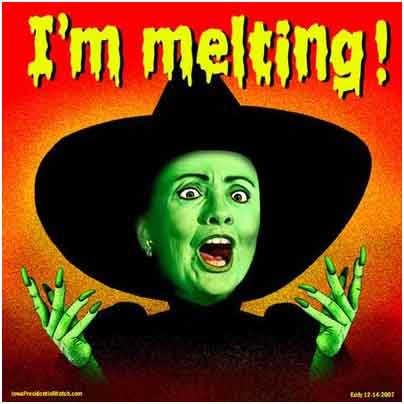
Posted on 04/18/2016 7:17:04 PM PDT by MtnClimber
Most everyone has a pretty good idea of what an atomic explosion looks like. Through images and video, we know the flash, the fireball, the mushroom cloud. Seeing it all in person is quite different, however.
One of the few firsthand accounts immortalized to paper comes courtesy of the inimitable Richard Feynman, who was present for the very first detonation of a nuclear weapon. The test, codenamed "Trinity" was carried out on July 16, 1945 in the Jornada del Muerto desert of New Mexico. The 20-kiloton blast was the culmination of years of work by the scientists of the Manhattan Project. One of those scientists, the 27-year-old Feynman, sought to view his handiwork with his own eyes: They gave out dark glasses that you could watch it with. Dark glasses! Twenty miles away, you couldn't see a damn thing through dark glasses. So I figured the only thing that could really hurt your eyes (bright light can never hurt your eyes) is ultraviolet light. I got behind a truck windshield, because the ultraviolet can't go through glass, so that would be safe, and so I could see the damn thing.
Time comes, and this tremendous flash out there is so bright that I duck, and I see this purple splotch on the floor of the truck. I said, "That's not it. That's an after-image." So I look back up, and I see this white light changing into yellow and then into orange. Clouds form and disappear again--from the compression and expansion of the shock wave.
Finally, a big ball of orange, the center that was so bright, becomes a ball of orange that starts to rise and billow a little bit and get a little black around the edges, and then you see it's a big ball of smoke with flashes on the inside of the fire going out, the heat.
All this took about one minute. It was a series from bright to dark, and I had seen it. I am about the only guy who actually looked at the damn thing--the first Trinity test. Everybody else had dark glasses, and the people at six miles couldn't see it because they were all told to lie on the floor. I'm probably the only guy who saw it with the human eye.
Actually, Feynman wasn't the only person who chose not to don their safety glasses that day. Ralph Carlisle Smith, the future assistant director of Los Alamos Scientific Laboratory, also observed the explosion with the naked eye. Here's what he saw:
Richard Feynman is the star of the Feynman Lecture Series on Physics. Really a great series if you get a chance to see them.

But Mama, that's where the fun is!"

Sobering account. Makes one feel small.
Amazing that before the first test, they knew what to expect as far as light, heat and blast radius.
Ferynman was a pretty smart guy.
But they didn’t know what the h-bomb would do.
You never know what will happen when you start a fusion reaction.
Was present at a conventional test at white sands in the 80’s that simulated a .6kt nuclear weapon using 2400 tons of ANFO ..... HARVEST GOLD was the test name if I remember right. Been to Trinity site many times during my military Explosive Ordnance Disposal career..... both pre-fence and post fence era...:o)
Great read....thanks for posting !!!
Stay Safe !
There was some theory that setting off a fusion reaction might cause the planet’s atmshphere to ignite. I guess the thought was, hold my berilium and watch this!
Watching on you tube. Fantastic.
This is in “Surely You’re Joking, Mr. Feynman!” ... Perhaps a record as a title with six punctuation marks. It’s in Los Alamos from Below, pgs 116-117. ... I got it right here!
My parents lived thru that era when the bomb was dropped. They said they believed the US government when it said a million US soldiers would have died if we didn’t drop the bomb and invaded the island instead.
In an interview with one of the scientist on the project I heard, he said they weren't sure what the result would be.
There was a very big boom and cloud.
Japan was willing to sacrifice a million civilians in a hopeless defense of the Home Islands. It was an issue of the nation saving face and the citizens of Japan were resigned to this fate.
It is inconceivable to the western mind but it is really what the Japanese planned to do. It was Shinto and Bushido and national history all mixed together with a radical zealotry that enveloped the Japanese officer corps in the years right before the war.
And then the atomic bombs arrived like a force of nature. Like typhoons or earthquakes or volcanoes. And being a force of nature they permitted the Japanese to surrender without losing face, something they would not have done otherwise. In a strange way the bombs saved many, many lives on both sides.
Disclaimer: Opinions posted on Free Republic are those of the individual posters and do not necessarily represent the opinion of Free Republic or its management. All materials posted herein are protected by copyright law and the exemption for fair use of copyrighted works.